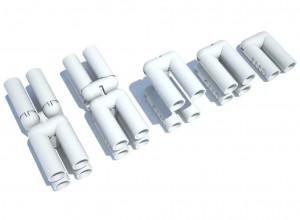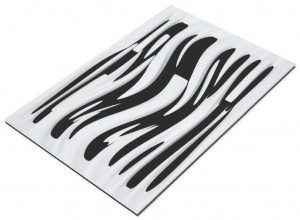 ASSIGNMENT 3
ASSIGNMENT 3
DESCRIPTION
The purpose of this project was to explore the advantages of the FDM printing as a fabrication technique. For this exercise, it was developed a set of prototypes of joints for a mechanical assembly. The design of the joints gave the final piece the ability to expand and retract. Basically there were used 3 variations of the same joint for the structure to achieve 3 different behaviors.
The 3D printing process required that all the edges of the pieces were worked in such a way that no opening could be identified. This was the most important part in order to have a successful file that would work for the 3D printing machine. During the exportation process, we had some joints that showed problems in the edges. Finally, we arranged the file and all the edges were closed. However, when we got the final pieces printed, some of them were stick together. We are not sure if it was because of the digital design or the washing process.
See the full process document here.

 ASSIGNMENT 2
ASSIGNMENT 2
